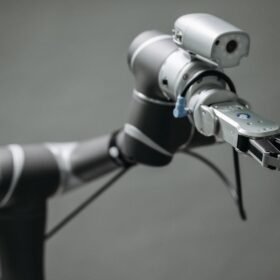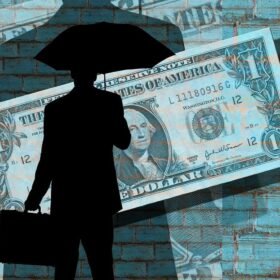According to research, more than 2,000,000 Americans live without basic access to safe drinking water and sanitation. This points out to coming up with a pertinent plan to solve the water crises and prevent every possible water damage. Talking about California, which has one of the most acute water problems, extended droughts and times of intense rain in Southern California have always exacerbated the situation. However, in general, there are many day-to-day events which can cause water damage to a home or commercial building. These may include:
- Plumbing leaks
- Leaking water heaters, roofs and other appliances
- Sewage backups
- Overflowing toilets, bathtubs, and sinks
- Flooding from firefighting
- Mudslides
- Flooding and storm damage
- Heavy rainfall
- Groundwater infiltration
- Low water pressure
In whatever way it occurs, the hazardous water damage may go far beyond the basic self-repair and can cause untold damage to your property. Microscopic mold spores which exist nearly everywhere, indoors and outdoors, can easily pervade every part of your property if water damage isn’t treated in time.
So here we are with a list of top four typical plumbing and water damage crises, with suggestions as how to avoid them:
Slow or Clogged Drains And Toilets
Clogged drains and toilets can be a major source of frustration every now and then. Drainage problems often lead to serious health hazards and plumbing disasters. A slow or clogged drain in a home means that the issue is localized to that area specifically, caused simply because hair, soap, toothpaste and other foreign objects have accumulated in that drain over time. But multiple slow or clogged drains need to be dealt immediately and indicate severe sewer line problems. Overflowing sinks and clogged toilets are also an extensive source of water damage. Unable to pass down the pipe, solid items block the flow partially or completely. The worst clogs may call for a pipe snake or professional, if a simple plunge doesn’t help.
How to Avoid Clogging Drains and Toilets:
Prevent toilet clogs by only flushing dissolvable waste products down the toilet. Ensure that no solid objects find their way down the drain. In showers, Use a hair catcher over the drain so loose strands don’t collect inside the drain pipe. Avoid pouring toxic bottles of drain cleaners waste down your drain. Use plumbing snakes to dislodge blockages to get the water flowing again. You can also ensure that the main waste water pipe is fitted with a backflow valve. The worst clogs may call for a pipe snake or professional, if a simple plunge doesn’t help.
LEAKY FAUCETS AND PIPES
Leaking faucets and pipes are a potential danger to your house not just in terms of time, money and peace but also in the sense of the nationwide wastage they cause- plumbing leaks can account for over 1 trillion gallons of water. Although not an emergency, such leakages need our immediate attention to save maximum efforts in future.
Leaky pipes and faucets can be caused by various reasons:
- Stubborn clogs
- Incorrect pipe laying
- Pipe corrosion and leaks due to deterioration, shifting, high water pressure.
- Improper faucet installation
- Pipe joint damage
- Cracked seals or cracked pipes
- Excessive water pressure
- Tearing, dislodging or stiffening of washer or O-ring
- Worn-out or corroded valve seat.
How to Avoid Leaky Faucets and Pipes:
Natural wear of faucets are bound to cause leaks. But you can ensure slow wear by turning faucets on and off slowly and avoiding excessive pressure on the handles. Leaky pipes are difficult to prevent, but spotting the problem early with regular inspection can help. Look for moisture or small drips. Visible rusting or white lime deposits can signal the potential for leaking. A dripping faucet can be treated by replacing the washer responsible for the leak which can be both done by you or a professional.
WATER HEATER ISSUES
All of us know that the water heaters are the most ‘handle-with-care’ appliance. Their issues are quite apparent which may follow as not heating water, dripping water, puddles of water, discolored water and noises from the water heater unit, when in use. Usually, water heater problems are caused by issues like:
- Heating element failures
- Corrosion or sediment buildup in systems
- Loose or broken electrical connections
- Improper water heater installation
- The wrong size or type of system to support a home’s needs
- Leaks in the water heater, including not having enough hot water.
How to Avoid Water Heater Issues:
Corrosion often damages the tank and leads to leakage but it can be reduced by installing the water heater in a tray or drip pan, which can be drained to a safe location. You can also check the pressure valve regularly, drain the water tank to flush out the sediment periodically and keep track of the drips and leaks to prevent future problems. It is also advisable to completely inspect or replace tanks after using it for a time period of 10 years.
Some issues have simple fixes like relighting the pilot light or adjusting the water heater thermostat, but do not hesitate contacting an experienced plumber to deal with the more complex and potentially dangerous issues.
LOW WATER PRESSURE
Inadequate water pressure can give rise to many more challenges in our plumbing system than there already are. It can get worse with time, making it difficult to rinse things and shower. The issues of low water pressure can happen in both the new homes as well as the older ones and can widely affect the rest of the plumbing system too.
Low water pressure has a few possible causes:
- Water main break
- Leakage in pipes
- Build-up of minerals and sediment either in the pipes or in the faucet aerators and showerheads.
How to Avoid Low Water Pressure Issues:
It is extremely important to take care of weak water pressure to avoid bigger plumbing problems, such as pipe corrosion, hidden water leaks in your home, drain or sewer clogs, cracked or blocked sewer lines. To avoid low water pressure, install a filtration system to keep minerals out of your pipes to avoid future build-up. In case of any leakage, shut off all taps, check your water meter and wait a few hours without using any water to check for leaks. If the water meter changes, you likely have a leak. However, you might require a plumber if the underlying cause of the problem isn’t visible or to replace or repair the sections affected by build-up or corrosion.
BENEFITS FOR CALLING A PLUMBER
It’s cost-effective to tackle plumbing repairs on your own but in case the subject turns worse, it is always better to seek professional help. While choosing a reputable local plumber, make sure you do the complete profile check, have an accessible contact number and a reliable service provider.
We have listed below best water damage restoration San Diego:
SuperDry San Diego
San Diego is highly recommended for its water restoration services to residential, commercial, and industrial buildings which include Emergency flood service, Flood restoration, Disaster recovery, Water extraction, Property drying, Dehumidification, Storm flooding and Moisture detection. Its highly trained and IICRC-certified technicians deal with minor or severe water damage through 24/7365 emergency and same-day services which are licensed, bonded and insured.
Abbotts Fire & Flood Cleanup & Restoration
Abbotts Fire & Flood Cleanup & Restoration has been restoring homes and business properties from water damage since 1991 with superior quality workmanship and topnotch customer services. They offer 24/7 emergency and promises:
A+ rating in BBB
Emergency restoration services
30-minute guaranteed response time
Licensed, bonded and insured
SD- certified
911 Restoration of San Diego
Since 1978, 911 Restoration has been offering 24/7 emergency fire, mold, and water damage restoration services in homes and businesses in San Diego. The technicians are trained quickly in extracting water from the property and completely drying the structure using dehumidifiers and fans. They also specialise in the removal of black mold by employing air scrubbers and antimicrobial solutions. Rated A+ for its professionalism, 911 Restoration is one of the best water damage restoration.
Looking for Water Damage restoration in Los Angeles, we have got your back! Check out some of the best water damage restoration service providers in Los Angeles:
Quality Environmental
At Quality Environmental, Inc., the highly-trained technicians resolve a range of environmental problems. with confidence, speed, and top-level skills. Being specialists in building health and remediation of toxic and structural risk, these professionals reflect the highest standards for their industry throughout California.
Simplistic water restoration
Providing services since 2009, Simplistic Water Restoration has been serving residential and commercial clients through a range of services to residents in Los Angeles and surrounding communities. In addition to water damage restoration, its staff also performs home restoration services, fire and smoke damage remediation. Its Average Review Score is 5 and professionalism has been rated A+.
Restoration Local
Restoration Local specializes in water damage restoration by providing water extraction and dry-out services to customers in Los Angeles and across Southern California. Its certified professionals offer top-level mold preventative and remediation services as well as a free, no-obligation estimate on water damage restoration services. It has been rated A+ in responsiveness, helpfulness and friendliness.
911 Restoration of West LA
911 Restoration of West LA provides full-service water damage restoration services in Los Angeles and the surrounding areas. It offers same-day and 24/7 emergency services and restoration services that involve water removal, flood cleanup, roof repair, leak detection, and drying and dehumidifying. It has been rated A+ for its reputation and consistency.







